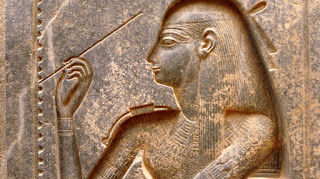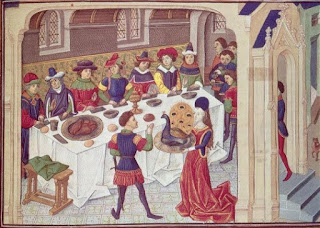It is a
fallacy that resolutions we make for the new year are a recent
invention. In fact, with new year
celebrations occurring all over the world, it is not surprising that the roots
for these attempts at being better each year would not originate in the U.S.
If you were
to guess that the earliest celebration for the new year began in ancient times,
you would be correct! For the
Babylonians held a festival at the first new moon following the vernal equinox over
4,000 years ago. This would be the day
when the hours of daylight and night would be equal. But the Akitu
festival would last 12 days to mark the “rebirth of the natural world”.
The Roman
emperor Julius Caesar consulted with astronomers and mathematicians of his time
and created the Julian calendar. The
most significant part of this was that the calendar year no longer began with
the vernal equinox in March. Caesar decreed
that the year should start on January 1, the month named for Janus, the Roman god of
beginnings. Included in the festivities
were gift giving, decorations of laurel branches in the home, and attending
wild parties.
In Egypt the
new year coincided with the appearance of Sirius, the brightest star in the sky
after being invisible for 70 days. Also
at this time the annual Nile River flooding would occur. This assured farmers that they would have
fertile fields during the year. The
festival, known as Wepet Renpet (“opening
of the year”), was a time of rebirth and rejuvenation and marked by feasts
and religious rites.
One of the
oldest celebrations belongs to the Chinese dating back 3,000 years during the
Shang Dynasty. And though it began to
honor the spring plantings, legend told of a monster called Nian that preyed
upon villages on the New Year.
This would
last 15 days with celebrations centered on the home and family. The Chinese
New Year is still based on the lunar calendar – toward the end of January
or early February – with one of the twelve animals of the zodiac for each
year. For 2018 we will enter the year of
the Earth
Dog.
During the
Middle Ages, chivalrous knights would take the “Peacock Vow” by placing their hand on a live or roasted peacock,
thus renewing their promise to knightly values.
It was Pope Gregory XIII who re-established January 1 as the time when
the new year would begin in 1582.
Since then the
process of greeting the new year has been observed in many countries whose
celebrations have begun on the Eve and carry over into the first hours of the
New Year. These are marked with meals
and/or snacks, in the hope of granting good luck in the coming year. Spain and several other Spanish-speaking
countries take 12 grapes before midnight to symbolize their hopes for each
month.
New Year’s dishes across the
world might include legumes, lentils in Italy, and black-eyed peas in the
U.S. All of them being rounded were
representative of financial success.
The English
speaking countries use fireworks and
sing “Auld Lang Syne”.
Getting back
to the Babylonians, their promises were tributes to their gods in the hope of staying
on the good side of the deities. This
included paying off old debts and returning borrowed items such as farm
equipment. A writer and Scottish gentry member, Anne Halkett made a diary entry
in 1671 that contained pledges taken from biblical verses. She called the page “Resolutions” and wrote
them on January 2, thus possibly indicating this practice of making promises to
do and be better was already being used.
The actual term new year resolution was first
recorded in a Boston newspaper in 1813 from an article entitled “The Friday
Lecture”.













No comments:
Post a Comment